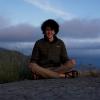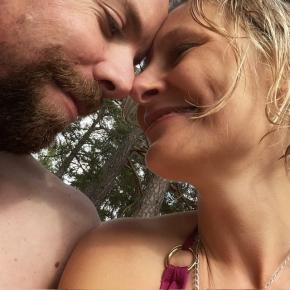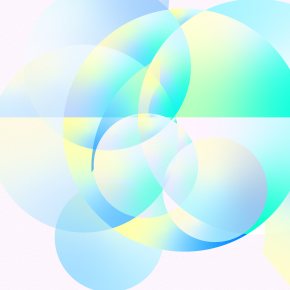Contemplating the Spatial Distribution of Thought - Discussion
Contemplating the Spatial Distribution of Thought

Taylor Horne, modified 3 Years ago at 12/8/20 5:06 AM
Created 3 Years ago at 12/8/20 5:06 AM
Contemplating the Spatial Distribution of Thought
Posts: 4 Join Date: 12/8/20 Recent Posts
I am curious if anyone has ever experienced thoughts that occurred outside of the body. I was contemplating the nature of the senses, and specifically wondered how the conceptual mind was similar to the other senses. My narrative thoughts typically occur spatially within my head. I am inexperienced when it comes to visualization, but I imagine that it would be more spatially diverse in its manifestation. In my contemplation I figured that if thought is just a sensation in the sense-field of mind, and all sense fields are impersonal, then it would follow that thought could appear other places in space than in my head. Is what I call "my head" actually as impersonal as the train whistle that appears in the night? I certainly feel a sense of referentiality revolving around the body. Sensation is still coming in through a filter that differentiates between not-body (not me) and body (me).
Personal experiences elucidated with conceptual models would be greatly appreciated. I'm spending more and more time in states of consciousness where sensation is clearly spatially dispersed and having some sort of conceptual framework for this might aid the mind in acclimating to this new spaciousness of being.
Personal experiences elucidated with conceptual models would be greatly appreciated. I'm spending more and more time in states of consciousness where sensation is clearly spatially dispersed and having some sort of conceptual framework for this might aid the mind in acclimating to this new spaciousness of being.

Chris M, modified 3 Years ago at 12/8/20 6:46 AM
Created 3 Years ago at 12/8/20 6:45 AM
RE: Contemplating the Spatial Distribution of Thought
Posts: 5149 Join Date: 1/26/13 Recent Posts
Yep - my experience is that thoughts actually have no location, we just assume they're located inside our heads. As you go deeper into this investigation you may realize that space itself is constructed. For good reason, obviously, but ultimately dependently arising.

Ni Nurta, modified 3 Years ago at 12/8/20 2:25 PM
Created 3 Years ago at 12/8/20 2:25 PM
RE: Contemplating the Spatial Distribution of Thought
Posts: 1093 Join Date: 2/22/20 Recent Posts
The location of thoughts is the same as the "location" of awareness the moment the thought is generated (neurons fire in the brain) and this is pretty much how thinking about objects in the real world works. By default there is thought about every single object and especially animals (this include us, great apes  ) and it is not in head but it is out there where object is and it describes this object to us. That is why object appear there and not here. Typically however at the moment of perception we do not have any thoughts which are let's say conclusive and any additional thinking about object need to be continued and when this happens attention moves inwards. When you try to observe where you are or where thoughts are you create this perception of thinking from inside head. When you do not think about this from where you think then thoughts are location-less. Because however we always expect some perspective (this comes from our animal past filled with dangers of living) mind constantly creates this scene of observing to give itself some workable perspective. For mind any unfinished thought is potential threat and any time you check where you are is like "am I gonna be fine or do this thing is going to eat me?" hence dukkha.
) and it is not in head but it is out there where object is and it describes this object to us. That is why object appear there and not here. Typically however at the moment of perception we do not have any thoughts which are let's say conclusive and any additional thinking about object need to be continued and when this happens attention moves inwards. When you try to observe where you are or where thoughts are you create this perception of thinking from inside head. When you do not think about this from where you think then thoughts are location-less. Because however we always expect some perspective (this comes from our animal past filled with dangers of living) mind constantly creates this scene of observing to give itself some workable perspective. For mind any unfinished thought is potential threat and any time you check where you are is like "am I gonna be fine or do this thing is going to eat me?" hence dukkha.
Some people who spent a lot of time on practice employ sophisticated techniques of perception. When you know how brain works and even if you do not really care but spent years on observing and optimizing perception you learn how to do it more efficiently and to get nicer perception. One of the effects of such optimizations is uninterrupted processing of objects of perception until they are completed. When all objects are processed there is no need to create perspective of watcher to check how you are in relation to objects. This completing processing of objects also gives the experience of "doneness" that people report. It is in relation to objects of perception, not their practice but this is all encompassing experience so without specific investigation regarding what it is it is hard to say and since people think a lot about ther practice they mix things, especially that thought about practice also feels done... fun fact But ending this digression, it is also worth noting that when there are no specific objects to process perception switch to a kind of wide mode where it only quickly assesses if there are new objects and when any new object appear but is fully processed before creating need to check where you are in relation to this object then there is no need to feel dukkha caused by being threatened, no need to experience watcher pespective.
But ending this digression, it is also worth noting that when there are no specific objects to process perception switch to a kind of wide mode where it only quickly assesses if there are new objects and when any new object appear but is fully processed before creating need to check where you are in relation to this object then there is no need to feel dukkha caused by being threatened, no need to experience watcher pespective.
It is one way this can be looked at.
Strategies people employ when processing reality have some differences but the goal is one: to avoid existence of certain activity in brain. This some people can accomplish by processing things quickly in-place by putting right effort in to perception to not have to re-do it (hello Chris :lol , by utilizing concentration, by using sophisticated control of activation states of parts of brain which process objects to block them right after they fire to force processing of the same object by the new parts brain in the same way and aggregating results to eventually (if input from new brain part doesn't change anything in given perception) conclude processing "done" before ever letting unfinished thought to linger (guess, I should say hello myself
, by utilizing concentration, by using sophisticated control of activation states of parts of brain which process objects to block them right after they fire to force processing of the same object by the new parts brain in the same way and aggregating results to eventually (if input from new brain part doesn't change anything in given perception) conclude processing "done" before ever letting unfinished thought to linger (guess, I should say hello myself  ) or many other. My own solution seems overengineered because it was developed to improve eye sight and I cannot rely on data from eyes from one moment to see sharply from faw away. It was not meditative attainment. From what I experienced when trying other methods which other people use they bring similar results, though each gives distinctive experience and they all have their advantages and disadvantages.
) or many other. My own solution seems overengineered because it was developed to improve eye sight and I cannot rely on data from eyes from one moment to see sharply from faw away. It was not meditative attainment. From what I experienced when trying other methods which other people use they bring similar results, though each gives distinctive experience and they all have their advantages and disadvantages.
Some people who spent a lot of time on practice employ sophisticated techniques of perception. When you know how brain works and even if you do not really care but spent years on observing and optimizing perception you learn how to do it more efficiently and to get nicer perception. One of the effects of such optimizations is uninterrupted processing of objects of perception until they are completed. When all objects are processed there is no need to create perspective of watcher to check how you are in relation to objects. This completing processing of objects also gives the experience of "doneness" that people report. It is in relation to objects of perception, not their practice but this is all encompassing experience so without specific investigation regarding what it is it is hard to say and since people think a lot about ther practice they mix things, especially that thought about practice also feels done... fun fact
It is one way this can be looked at.
Strategies people employ when processing reality have some differences but the goal is one: to avoid existence of certain activity in brain. This some people can accomplish by processing things quickly in-place by putting right effort in to perception to not have to re-do it (hello Chris :lol
shargrol, modified 3 Years ago at 12/9/20 5:42 AM
Created 3 Years ago at 12/9/20 5:42 AM
RE: Contemplating the Spatial Distribution of Thought
Posts: 2398 Join Date: 2/8/16 Recent Posts
"Where is it?" is one of the biggest dharma questions there is.
The sound of the bird... is the sound outside my mind, inside my mind, or somewhere moving between the bird and my mind? None of these answers seem to really answer it. Experience itself is an endlessly interesting thing -- a wonder! -- if you are really intimate with it.
Other classics:
What is this?
How big is it?
Where does it come from and where does it go?
The point is not to narratively answer the question, but to reconnect with experience itself.
We love to think that words can describe the nature of experience/mind... but with practice, it becomes more and more obvious that words fall short.
The sound of the bird... is the sound outside my mind, inside my mind, or somewhere moving between the bird and my mind? None of these answers seem to really answer it. Experience itself is an endlessly interesting thing -- a wonder! -- if you are really intimate with it.
Other classics:
What is this?
How big is it?
Where does it come from and where does it go?
The point is not to narratively answer the question, but to reconnect with experience itself.
We love to think that words can describe the nature of experience/mind... but with practice, it becomes more and more obvious that words fall short.

Linda ”Polly Ester” Ö, modified 3 Years ago at 12/9/20 6:34 AM
Created 3 Years ago at 12/9/20 6:34 AM
RE: Contemplating the Spatial Distribution of Thought
Posts: 7134 Join Date: 12/8/18 Recent Posts
Yeah, I was just lying down contemplating this with regard to "outside" sounds, as I have been adviced to search for the sensations that make it appear as if the sounds reach me ears. I really can't find any such sensations. The sound seems to happen "out there" where the traffic is, and there are touch sensations of ears meeting pillows, but I can't even find any sensations that say that the ears are "here". It all just seems to be thoughts at a taken-for-granted level, applying logic to mental representations mimicking senses, that say that if "you" can feel touch sensations, then those sensations must be "here", and if the traffic sound is that low, compared to some other mental representation, then it must be "over there", and if the sound is "over there", then it needs to reach the ears "over here" because those are supposedly what we hear with, and there are mental representations of loud sounds hurting ears and of swollen ears together with impaired hearing, and very brief sensations of contractions around what mental representations tag as the heart, together with thoughts saying that this confirms that it "must" be so, and other thoughts that sceptically say that those sensations actually do not in themselves say anything more than the actual sensations -
and I can't place those thoughts anywhere. I was pondering the possibility of being the entire space, but realized that I can't actually find the space either, and of course I can't, because that would require a position outside of space (as Archimedes supposedly pointed to). The space is just assumed, and there's a whole lot going on that can't be located at all.
and I can't place those thoughts anywhere. I was pondering the possibility of being the entire space, but realized that I can't actually find the space either, and of course I can't, because that would require a position outside of space (as Archimedes supposedly pointed to). The space is just assumed, and there's a whole lot going on that can't be located at all.

Steph S, modified 3 Years ago at 12/9/20 12:55 PM
Created 3 Years ago at 12/9/20 12:55 PM
RE: Contemplating the Spatial Distribution of Thought
Posts: 672 Join Date: 3/24/10 Recent Postsshargrol:
"Where is it?" is one of the biggest dharma questions there is.
The sound of the bird... is the sound outside my mind, inside my mind, or somewhere moving between the bird and my mind? None of these answers seem to really answer it. Experience itself is an endlessly interesting thing -- a wonder! -- if you are really intimate with it.
Other classics:
What is this?
How big is it?
Where does it come from and where does it go?
The point is not to narratively answer the question, but to reconnect with experience itself.
We love to think that words can describe the nature of experience/mind... but with practice, it becomes more and more obvious that words fall short.
The sound of the bird... is the sound outside my mind, inside my mind, or somewhere moving between the bird and my mind? None of these answers seem to really answer it. Experience itself is an endlessly interesting thing -- a wonder! -- if you are really intimate with it.
Other classics:
What is this?
How big is it?
Where does it come from and where does it go?
The point is not to narratively answer the question, but to reconnect with experience itself.
We love to think that words can describe the nature of experience/mind... but with practice, it becomes more and more obvious that words fall short.
shargrol coming in with the classics again. These are good direct pointers - and yes, to reconnect with the experience in not trying to answer the question conceptually, but to see in direct experience the answer to that question. Some others from a Michael Taft stream I watched recently that are pretty good too:
What is true wisdom?
What is pure clarity?
Where is boundless compassion?
What is a Tathagata?

Papa Che Dusko, modified 3 Years ago at 12/10/20 3:14 AM
Created 3 Years ago at 12/10/20 3:14 AM
RE: Contemplating the Spatial Distribution of Thought
Posts: 2720 Join Date: 3/1/20 Recent Posts
"What is true wisdom?
What is pure clarity?
Where is boundless compassion?
What is a Tathagata? "
Or Kenneth Folks; " listening to ... listening to ... listening to ... listening to ... listening to ... listening to ... listening to ... listening ... listening ...

What is pure clarity?
Where is boundless compassion?
What is a Tathagata? "
Or Kenneth Folks; " listening to ... listening to ... listening to ... listening to ... listening to ... listening to ... listening to ... listening ... listening ...

Ni Nurta, modified 3 Years ago at 12/10/20 3:40 AM
Created 3 Years ago at 12/10/20 3:40 AM
RE: Contemplating the Spatial Distribution of Thought
Posts: 1093 Join Date: 2/22/20 Recent PostsPapa Che Dusko:
Or Kenneth Folks; " listening to ... listening to ... listening to ... listening to ... listening to ... listening to ... listening to ... listening ... listening ...

To be more classical one can use label "om" for noticing word "om"... instant ommmization of reality
George S, modified 3 Years ago at 12/11/20 8:54 AM
Created 3 Years ago at 12/11/20 8:54 AM
RE: Contemplating the Spatial Distribution of Thought
Posts: 2722 Join Date: 2/26/19 Recent PostsChris Marti:
Yep - my experience is that thoughts actually have no location, we just assume they're located inside our heads. As you go deeper into this investigation you may realize that space itself is constructed. For good reason, obviously, but ultimately dependently arising.
I just wanted to say, this was a BIG pointer for me Chris. I hope you can keep casting the odd pearl in our direction (after you've had a well-deserved break of course)





